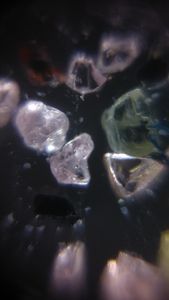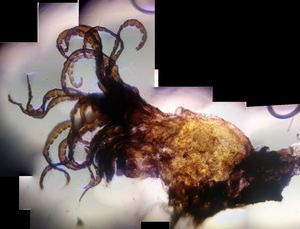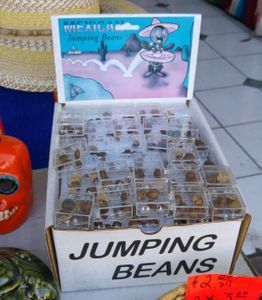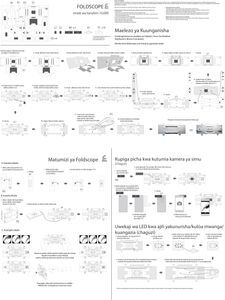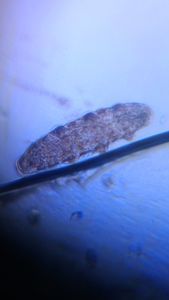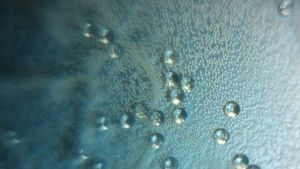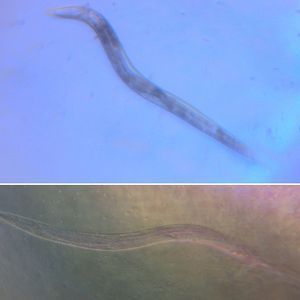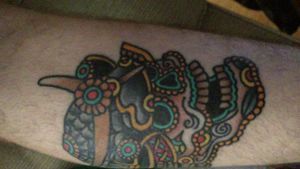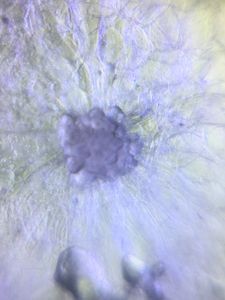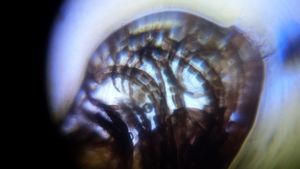Blood flow through a spider’s leg
 Oct 28, 2015 • 5:53 AM UTC
Oct 28, 2015 • 5:53 AM UTC Unknown Location
Unknown Location 140x Magnification
140x Magnification Unknown
Unknown
Tom Hata
Learn about the author...
17posts
18comments
3locations
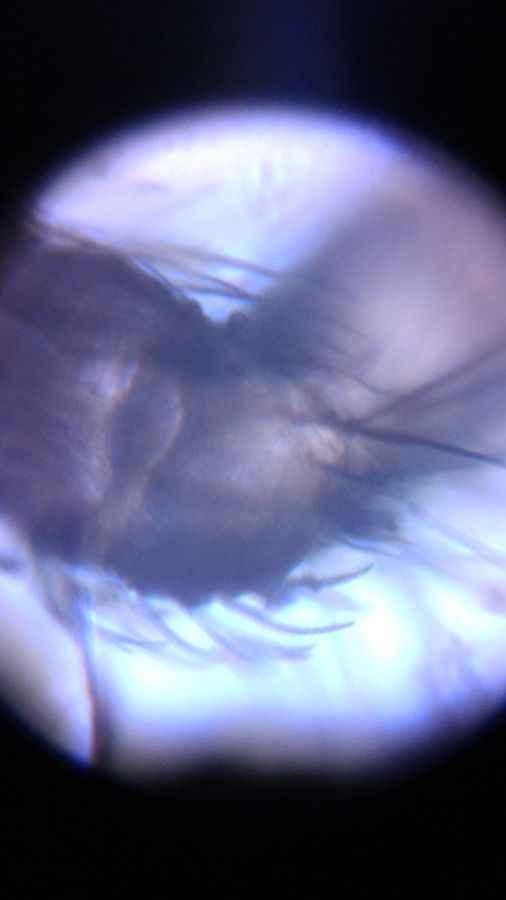
Here’s a phenomenon that is perplexing me, but perhaps the answer is simple. The legs of small spiders are so thin that you can often see the “blood” or hemolymph flowing through them with the Foldscope. Though this is visible even in low magnification, here I took a closer look with the high magnification lens. For the first time, though, I was able to capture the twitching of the leg coupled with footage of blood flow. What puzzles me is this: spiders use hydraulic pressure to extend their legs, which is why their legs curl up when they die (the pressure suddenly decreases). For blood to be flowing, there must be a pressure gradient as well. How does a spider simultaneously manage both blood flow and coordinated movement? This may be a simple question for someone familiar with a spider’s body plan… but this has also inspired me to undertake a more comprehensive study mapping blood flow and body movement in a single spider. More to come!
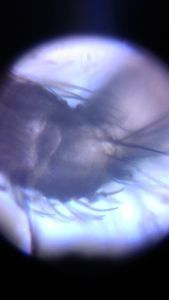

Sign in to commentNobody has commented yet... Share your thoughts with the author and start the discussion!
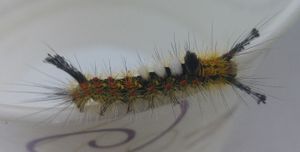
 0 Applause
0 Applause 0 Comments
0 Comments